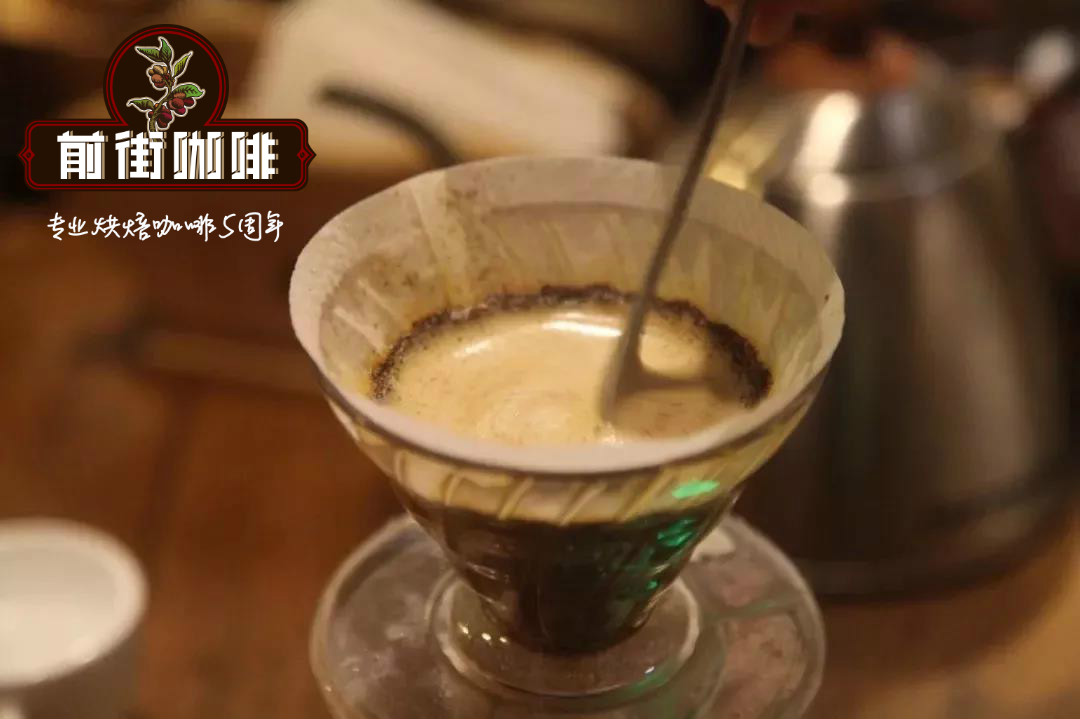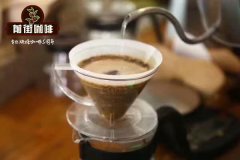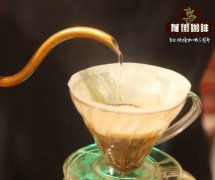Why is the coffee I make different from that in the store? Coffee variation-coffee grinding thickness, consistency and

Professional coffee knowledge exchange more coffee bean information please follow the coffee workshop (Wechat official account cafe_style)
I believe that after searching for a long time, many friends finally found their favorite coffee beans in the coffee shop.
Holding the bag of coffee beans in my arms, I started my journey with anticipation.
However, you find that the coffee you brew is very different from the beauty you enjoy in the store!
Why is this happening?
In fact, there are many factors hidden in hand-made coffee!
Today, let's talk about the small details about the causes of coffee.
The grinding thickness of hand-brewed coffee and Italian coffee is very important.
It is about how to improve the flavor of coffee, ensure the continuity of quality, and test the brewing parameters, and so on.
Unfortunately, there are a lot of good coffee, all of which fail in the grinding step.
Wrong thickness setting, inconsistent grinding quality, there are many factors may affect the coffee
As a result, apart from making the coffee sour and bitter, it can't be reproduced when it tastes good.
The author interviewed several experts: Mark, founder of the Kruve sieve brand, Miki Suzuki (Japanese coffee guru champion), Ben Put (Canadian coffee guru champion) and others, ways to reduce caking of coffee powder and ensure grinding consistency when grinding.
Grinding thickness, extraction and flavor
When making coffee, the main goal is to control the extraction.
The flavor of coffee depends on how many substances are dissolved from coffee beans into water.
The balance of this part comes from the ratio of gouache to powder, cooking time, water temperature, grinding thickness and other factors.
The purpose of grinding is to increase the surface area of coffee beans in contact with water.
The coarser the water is ground, the faster the water passes, and the finer the water is, the slower it is.
Therefore, the grinding thickness affects the brewing time and extraction rate of coffee.
The thicker grinding will have a looser structure distribution, which will allow the water to pass through the coffee powder faster.
The less contact surface or the shorter cooking time, will lead to the possibility of insufficient extraction (unless immersion cooking is used).
On the other hand, the structure distribution of finer grinding will be tighter, which means that the longer the water passes through the coffee powder.
And the more powder contact surface will increase the extraction rate.
Is your coffee too sour to drink? It means that the degree of grinding is too rough to lead to sour taste, it is suggested that it can be ground a little finer. If the coffee is too bitter, it is recommended to grind it a little thicker.
What will affect the grinding thickness?
First of all, the author suggests checking whether the cooking formula is correct.
This also includes the origin, variety, treatment and roasting degree of coffee beans.
Brewers may want to emphasize a certain flavor, such as deep-roasted coffee, which is easier to dissolve, so thicker grinding may be used.
However, there are two things to pay attention to here.
The first is the "cooking method": different cooking utensils are suitable for different degrees of grinding.
For example, French filter kettles are usually made by rough grinding, while most hand punches (except Chemex) are medium-fine grinding.
Espresso or Turkish pots use fine grinding or even very fine grinding, while some utensils, such as Philharmonic pressure, use a wide range of grinding.
Then there is the freshness of coffee. We all hope that the beans on hand are fresh.
However, as the storage time lengthens, it is necessary to adjust the brewing formula, because the flavor of the coffee will gradually fade away due to the storage time.
In this case, many brewers will grind finer (increase the extraction rate), while others adjust (increase the concentration) by increasing the amount of powder and grinding a little thicker.
However, even if adjusting the grinding thickness can control the extraction of coffee, and then adjust the flavor of coffee
There are still many factors that make this matter very difficult.
What is the salt-like grinding thickness?
Many articles or books on cooking recipes talk about the thickness of grinding.
It is often said that "as thick as salt" or "as thick as fine sand"
But when many people see these descriptive words, they don't know the exact scope.
Even if you probably know it but are not accurate, this may lead to the difficulty of reproducing the cooking results or adjusting the thickness.
In order to ensure the consistency of the grinding thickness, we need a common language to communicate, and sometimes the setting of the bean grinder can be adjusted.
For example, the Baratza Sette 30 bean grinder will use a number of 1-30 to distinguish the grinding degree, but this is not applicable to all bean grinders.
And many hand bean grinders can only rotate the turntable without scale when adjusting the grinding degree, which means that you can not accurately reproduce the grinding degree.
In addition, the cutter head of the bean grinder will become blunt with use, and even two bean grinders of the same model may be ground in different thicknesses. In fact, the same bean grinder may grind different thicknesses of powder after a few months.
Of course, if the cooking formula requires you to use a different brand of bean grinder,
These inspections will be meaningless because you are not sure which side has gone wrong.
The team tends to use microns to measure the degree of grinding, with screens ranging from 200 to 1600 microns
Team member Mark said: "the micron screen provides us with great reference value and allows us to control the thickness."
So that users can easily share the cooking formula and test it with different grinding thickness.
And adjust and correct the bean grinders in different stores.
Consistency of grinding with bean grinder
In addition, no matter what bean grinder you use, inconsistent grinding will be a problem.
If the grinding powder is large or small (including coarse particles and fine powder), it will lead to the difference of extraction rate.
Usually, the coffee powder with larger particles will lead to insufficient extraction, while the powder with small particles will be overextracted.
This will lead to unexpected extraction rates and confuse the flavor of the coffee, which will prevent you from successfully completing the brewing formula, and so on.
In order to avoid this situation, many fastidious people will use high-quality bean grinders with cutters.
But no matter how expensive the bean grinder may be, there may be inconsistent grinding.
During grinding, coffee beans are more likely to be broken by a knife than to crack neatly.
So there may always be some problems with fine powder and coarse particles.
Mark said that when Kruve started grinding refined systems,
We are studying how often the problem of grinding inconsistency occurs.
Use different screens to test bean grinders from household level to laboratory level
As a result, the thickness of the grinding is at least 10 times worse, which makes consistent grinding almost impossible.
Excluding bean grinders or cooking methods, this is why they actively provide supporting measures for home brewers to control grinding thickness.
Mark sieves the ground powder and weighs it to adjust the ratio of powder to water, but they are not the only ones who think that screening is important.
Many coffee masters and brewing champions use such utensils to assist them in brewing.
In the pursuit of high-quality boutique coffee, we should not underestimate any factors.
By setting the correct and consistent grinding thickness, you can convey the flavor you want to show through the cooking formula.
Experiment with different brewing factors, enjoy your coffee, and correct them each time you brew.
Important Notice :
前街咖啡 FrontStreet Coffee has moved to new addredd:
FrontStreet Coffee Address: 315,Donghua East Road,GuangZhou
Tel:020 38364473
- Prev

How does the water cut-off method affect the extraction of hand-made coffee?
Professional coffee knowledge exchange more coffee bean information Please pay attention to the coffee workshop (Wechat official account cafe_style) if you want to make good coffee, you can not ignore the importance of water quality, water temperature, water quality, chemical composition, water injection methods, etc., will affect the flavor, aroma and extraction rate of coffee extraction. In this article, let's take a look at the most commonly used water injection technique: water cut-off method.
- Next

How to adjust the water temperature to make a better hand-made coffee?
Professional coffee knowledge exchange more coffee bean information Please pay attention to the coffee workshop (Wechat official account cafe_style) in a cup of coffee, water accounts for 94-98%, but in addition, water temperature (including minerals in water) will also affect the sweet, bitter and sour taste of coffee. Controlling the temperature of cooking water is very important for people who like to flush by hand, but it is a pity that the water temperature is often because of people.
Related
- What is the meaning of lactic acid fermentation with coffee bean treatment?
- How to judge the state of foam by sound?
- How does the latte pull out the unicorn pattern? Come to get for a little trick to improve the flower pull!
- Will flower pulling affect the taste of the latte?
- Do you know the history of coffee?
- The difference between honey treatment and sun washing what is raisin honey treatment?
- What kind of milk can a novice use to make coffee foam to keep the foam longer? The correct method and skills of milking tutorial sharing
- Why do washed coffee beans taste sour? Flavor characteristics of washed Coffee
- Introduction to the skill of how to practice the size and height of water injection around the circle of hand-brewed coffee
- How do beginners practice coffee flower drawing from scratch?

